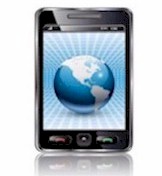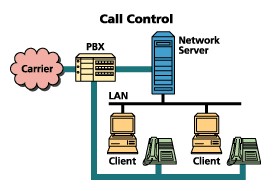|
|
DSC Tech Library
Computer Telephony Integration
 This section of our technical library presents information and documentation relating to CTI Computer Telephony Integration software and products.
Computer Telephony Integration CTI software is a rich set of phone software library routines that enable application programs to control your phone system.
This comprehensive CTI software lets you increase employee productivity, enhance customer service and reduce costs by combining the capabilities of our PACER phone system with the custom functionality of your Windows, Unix or Web applications.
Data collected by your phone ACD (Automatic Call Distribution) or IVR (Interactive Voice Response) systems can be passed to your existing PC, Unix or Web applications through our phone software.
The PACER predictive dialer can automatically call your customers and pass only connected calls to your agents. With our computer telephony software, your telephone and computer work together to provide cost-saving benefits.
This section of our technical library presents information and documentation relating to CTI Computer Telephony Integration software and products.
Computer Telephony Integration CTI software is a rich set of phone software library routines that enable application programs to control your phone system.
This comprehensive CTI software lets you increase employee productivity, enhance customer service and reduce costs by combining the capabilities of our PACER phone system with the custom functionality of your Windows, Unix or Web applications.
Data collected by your phone ACD (Automatic Call Distribution) or IVR (Interactive Voice Response) systems can be passed to your existing PC, Unix or Web applications through our phone software.
The PACER predictive dialer can automatically call your customers and pass only connected calls to your agents. With our computer telephony software, your telephone and computer work together to provide cost-saving benefits.
Computer Telephony for the Enterprise
Page 4
By Michael Sampson
COMPUTER FOR REAL-TIME CALL CONTROL
The majority of real time non-face-to-face communication tasks are accomplished using the telephone. Computer telephony (CT) allows the migration of call placement and reception to the computer. Within the call center environment, this integration allows multisecond reductions in the duration of each call, which adds up to real dollar toll charge and people savings when millions of calls are handled each month. For the user, CT calling permits the use of the richer computer interface for call placement, letting users dial by name, rather than by a number-associated with the name. It simplifies inbound call reception by providing on-screen notification identifying the calling party and a toolbar of options, such as "answer now," "let the phone ring until they hang up," "route immediately to voice mail," or "play a special greeting asking them to call back in 5 minutes."
The PhoneWare family from Q.Sys, for example, offers extensive capabilities for real-time call control, even down to redirecting that call you've just missed out of the voicemail system and back to your telephone device. Most PCs shipped are multimedia-ready, so moving toward CT call control is largely a back-end infrastructure and client software issue.
 An investigation into CT call control should consider these factors:
An investigation into CT call control should consider these factors:
- Call-control architecture: What call-control architectural model is supported by your proposed solution? Does the computer-switch integration take place at the client level ("first-party"), or the server level ("third-party"). First party is simplier, but third party has very clear benefits in terms of support-requirements and scalability. Also, third-party call control represents the direction of standards efforts, given recent efforts such as TSAPI and TAPI 2.0 and higher.
- Caller ID compliance: Does your telephony switching infrastructure support the delivery and reception of caller ID? For the delivery of caller ID, is each individual extension number delivered separately or just the main PBX number? If the latter, many of the benefits of screen popping are negated. For the reception of caller ID, consider the telephony makeup of your major inbound calling partners--will their technology deliver caller ID by extension or by extension group? Again, if it is not by individual extension, you may need to consider implementing an alternative mechanism for uniquely identifying callers entering your organization, such as the use of interactive voice response (IVR) technology.
- Phased deployment steps to reduce handset reliance: For users spending a moderate-to-high proportion of their time on the phone, one step to reducing reliance on the handset is the distribution of headsets. Overcoming the psychological attachment to the handset as the only way of talking on the telephone lays the foundation for the future elimination of the telephone as a separate device. The user transition to visual dialing is less significant; they have largely been freed from the constraints of the phone as a calling device. Obviously it's imperative that the new CT back-end infrastructure works seamlessly!
- Telephone backup: Provide users the option of a traditional telephone as a calling device. CT calling will be problematic at times, such as when the phone rings five seconds after packing up your notebook. Until the boot-up sequence of a PC is a sub-two-second affair, having an alternative call terminating device available will reduce much stress for users!
- Client software: Does your proposed vendor provide an open API for application-integration or are you limited to prepackaged client software? The former is a more powerful value proposition, since desktop calling can be integrated as a core service into existing business and productivity applications. This compares with delivering a separate client application that requires end-user selection at the point of initiating a communication task. The ideal is the invisible interface, whereby conscious thought is directed towards the business task at hand, not the mechanics of call placement. The CallBridge family from Siemens Rolm is a good example of a developers kit for third-party application integration.
- Directory integration: Does the proposed solution integrate with an existing directory service or is a new one required? Integration with an existing directory service is a key factor in keeping the total cost of ownership down. The PhoneLine family from CCOM Information Systems is build around leveraging a single directory for multiple tasks, and it integrates with the Aurora FastCall call control client software (note that Spanlink Communications acquired the FastCall line from Aurora in January 1998).
Page
[1]
[2]
[3]
[4]
[5]
[6]
[7]
[8]
[9]
Next
|


 This section of our technical library presents information and documentation relating to CTI Computer Telephony Integration software and products.
Computer Telephony Integration CTI software is a rich set of phone software library routines that enable application programs to control your phone system.
This comprehensive CTI software lets you increase employee productivity, enhance customer service and reduce costs by combining the capabilities of our PACER phone system with the custom functionality of your Windows, Unix or Web applications.
Data collected by your phone ACD (Automatic Call Distribution) or IVR (Interactive Voice Response) systems can be passed to your existing PC, Unix or Web applications through our phone software.
The PACER predictive dialer can automatically call your customers and pass only connected calls to your agents. With our computer telephony software, your telephone and computer work together to provide cost-saving benefits.
This section of our technical library presents information and documentation relating to CTI Computer Telephony Integration software and products.
Computer Telephony Integration CTI software is a rich set of phone software library routines that enable application programs to control your phone system.
This comprehensive CTI software lets you increase employee productivity, enhance customer service and reduce costs by combining the capabilities of our PACER phone system with the custom functionality of your Windows, Unix or Web applications.
Data collected by your phone ACD (Automatic Call Distribution) or IVR (Interactive Voice Response) systems can be passed to your existing PC, Unix or Web applications through our phone software.
The PACER predictive dialer can automatically call your customers and pass only connected calls to your agents. With our computer telephony software, your telephone and computer work together to provide cost-saving benefits.
 An investigation into CT call control should consider these factors:
An investigation into CT call control should consider these factors: